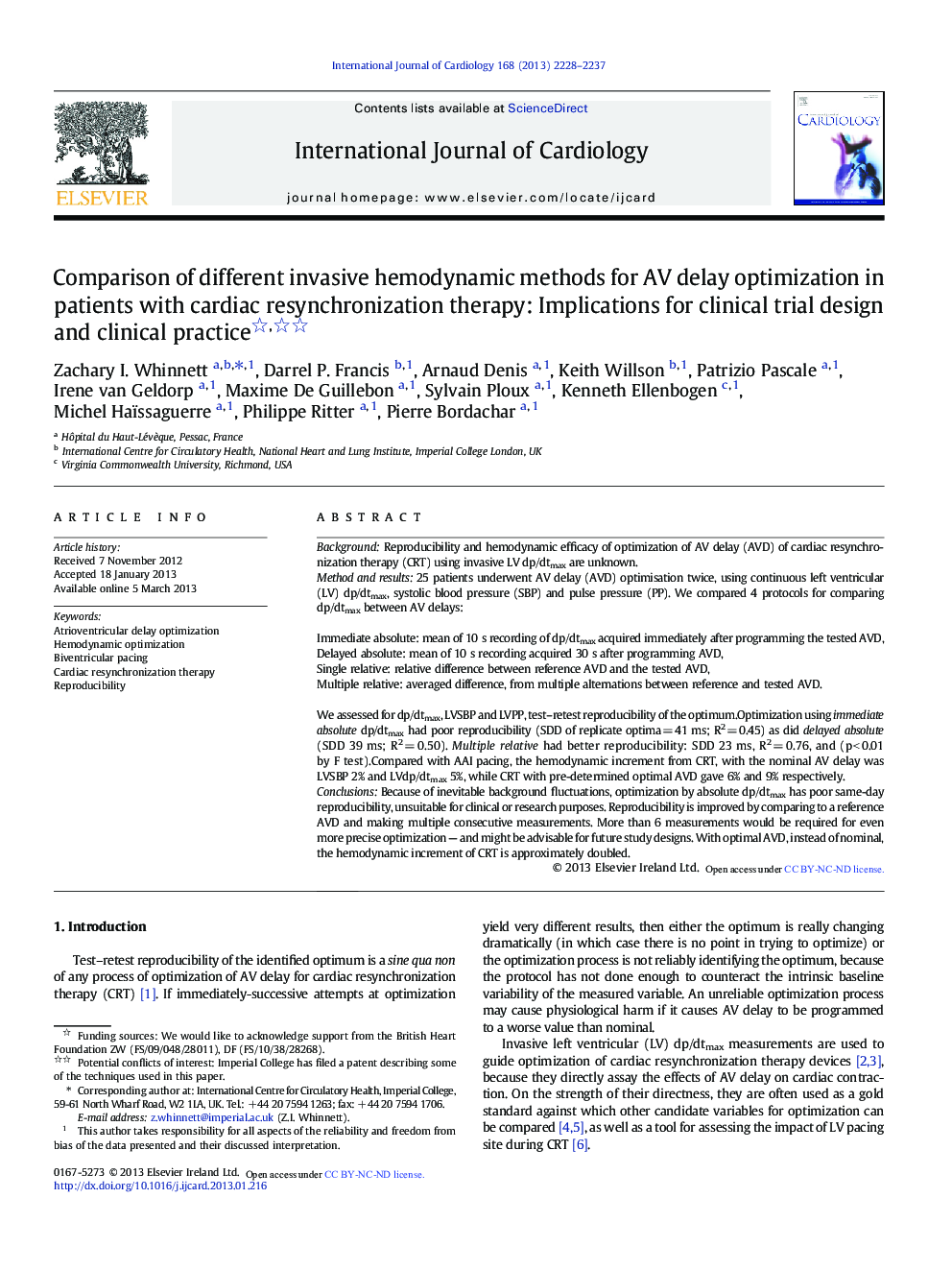| Article ID | Journal | Published Year | Pages | File Type |
|---|---|---|---|---|
| 5976266 | International Journal of Cardiology | 2013 | 10 Pages |
BackgroundReproducibility and hemodynamic efficacy of optimization of AV delay (AVD) of cardiac resynchronization therapy (CRT) using invasive LV dp/dtmax are unknown.Method and results25 patients underwent AV delay (AVD) optimisation twice, using continuous left ventricular (LV) dp/dtmax, systolic blood pressure (SBP) and pulse pressure (PP). We compared 4 protocols for comparing dp/dtmax between AV delays:Immediate absolute: mean of 10 s recording of dp/dtmax acquired immediately after programming the tested AVD,Delayed absolute: mean of 10 s recording acquired 30 s after programming AVD,Single relative: relative difference between reference AVD and the tested AVD,Multiple relative: averaged difference, from multiple alternations between reference and tested AVD.We assessed for dp/dtmax, LVSBP and LVPP, test-retest reproducibility of the optimum.Optimization using immediate absolute dp/dtmax had poor reproducibility (SDD of replicate optima = 41 ms; R2 = 0.45) as did delayed absolute (SDD 39 ms; R2 = 0.50). Multiple relative had better reproducibility: SDD 23 ms, R2 = 0.76, and (p < 0.01 by F test).Compared with AAI pacing, the hemodynamic increment from CRT, with the nominal AV delay was LVSBP 2% and LVdp/dtmax 5%, while CRT with pre-determined optimal AVD gave 6% and 9% respectively.ConclusionsBecause of inevitable background fluctuations, optimization by absolute dp/dtmax has poor same-day reproducibility, unsuitable for clinical or research purposes. Reproducibility is improved by comparing to a reference AVD and making multiple consecutive measurements. More than 6 measurements would be required for even more precise optimization - and might be advisable for future study designs. With optimal AVD, instead of nominal, the hemodynamic increment of CRT is approximately doubled.
